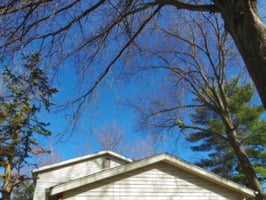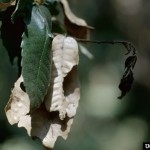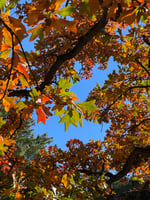Thats right, if you have an oak tree in need of pruning on your list of things to do in the yard,...
Tree Health: Oak Wilt Update
Being summer, shade is on many people’s minds, especially shade trees. Large mature oaks cast shadows over many homes in the St. Louis area. In the past several years many oak trees have been declining and dying across the region. The tree doctor will tell you although there are many different health issues that oaks face, one of the most severe possibilities is a condition known as Oak Wilt.
According to a 2011 publication for the US Forest Service it is one of the most serious tree diseases in the eastern United States, killing thousands of oaks each year in forests, woodlots, and home landscapes.¹
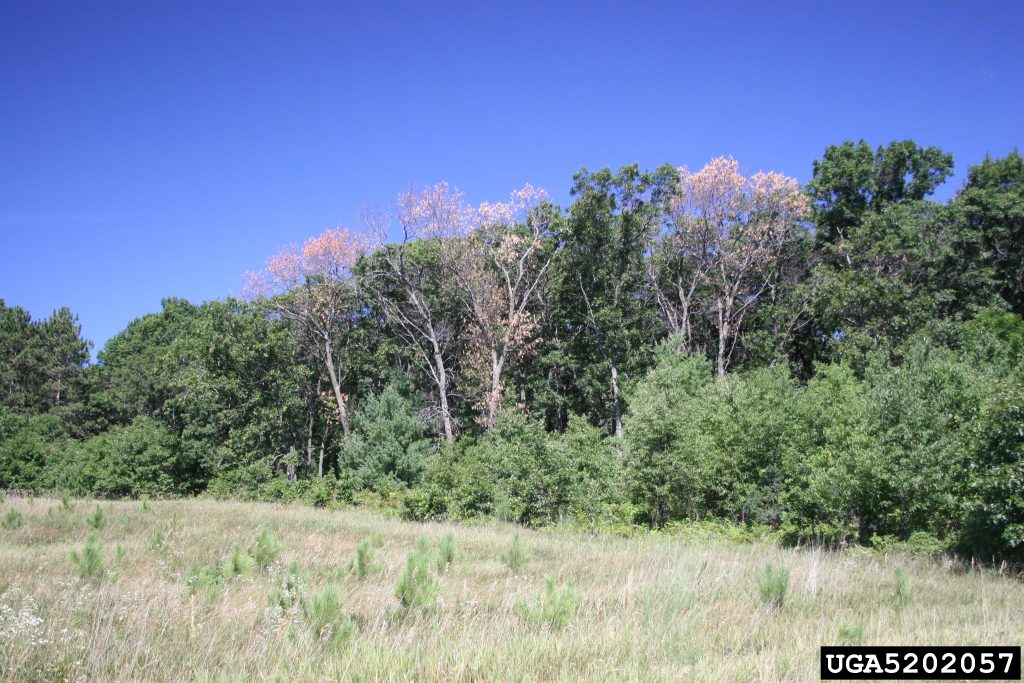
CC image courtesy Steven Katovich via Bugwood.org
Missouri Department of Conservation describes Oak Wilt this way:
“Oak Wilt is a lethal disease of oaks, especially species in the red oak group. (White Oaks are affected by this disease, but can survive several years with proper pruning.) The fungus responsible, Ceratocystis fagacearum, invades the tree, causing it to die. In Missouri, the oak wilt fungus is spread primarily when sap-feeding beetles carry oak wilt spores to fresh wounds during the early part of the growing season. Once established in a tree, oak wilt can move through root grafts connecting nearby oaks.”²
These fungal spores are present Mid March-June. Arborists who want to protect your oaks agree that you should not prune your oaks when the spores are present. If you absolutely must create a wound in your oak, or a storm causes one, there is a wound dressing that can be applied. However, the effectiveness of theses applications is not entirely clear. We have informed our customers of this concern and scheduled many oak prunings for after the summer. The fall is a great time to prune your oaks.
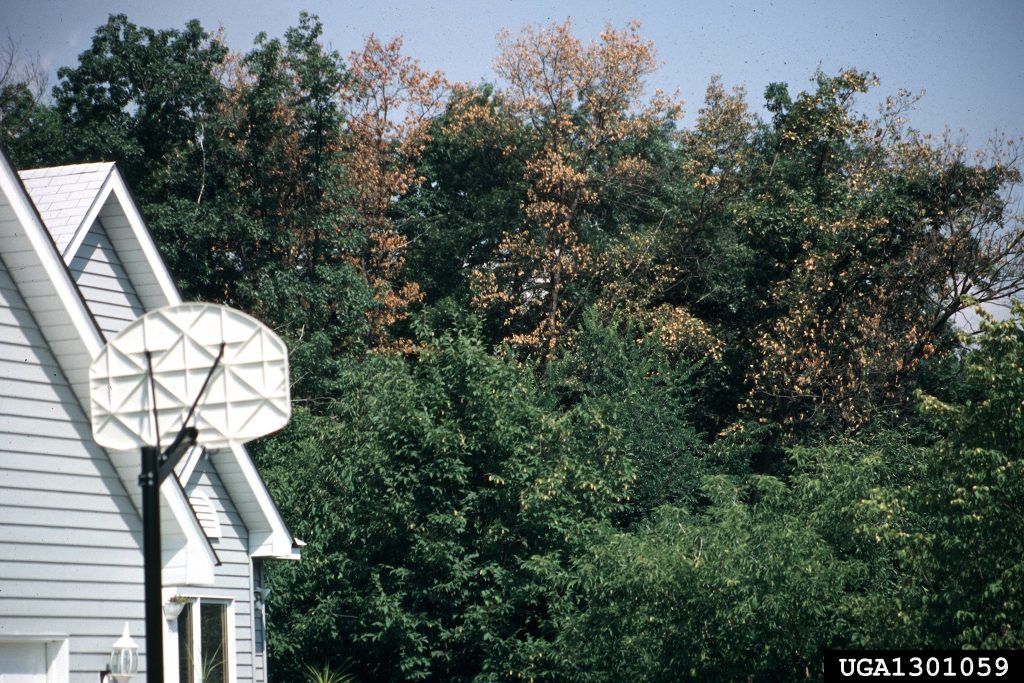
Here you can see the loss of losing a mature oak in an urban landscape. (CC image courtesy Joseph OBrien via Bugwood Images. )
If you believe one of your trees is already suffering from Oak Wilt, beware because the disease can also spread by the roots of infected trees reaching roots of otherwise healthy trees. Many professionals recommend trenching around the infected tree to keep the roots away from healthy trees.
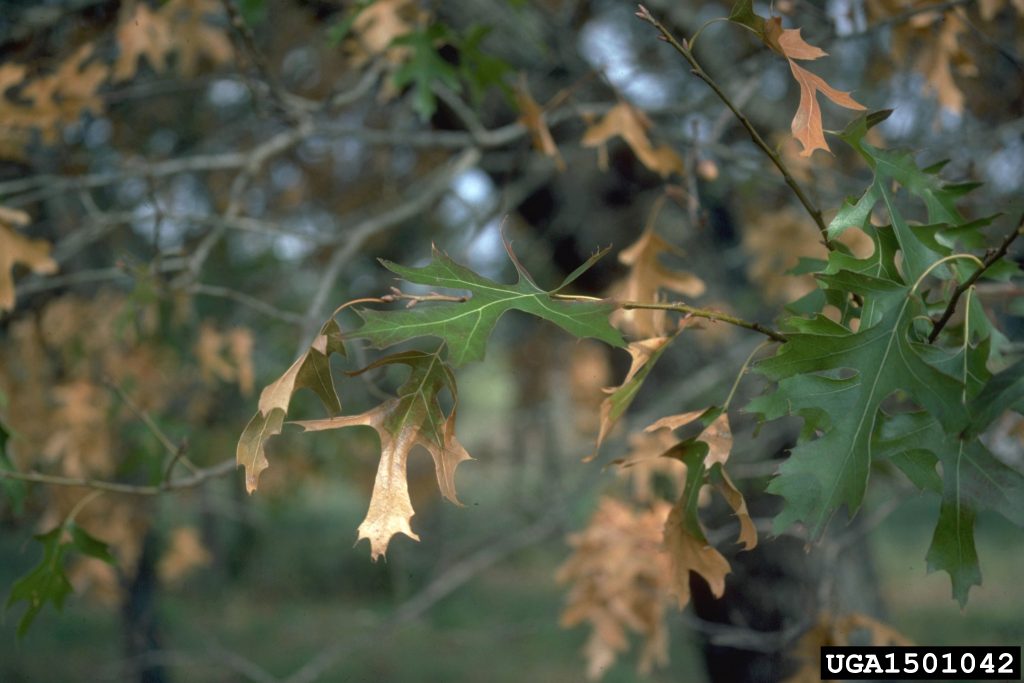
The first symptom in Red Oaks is the browning or wilting of leaves in the canopy during early summer. (CC image courtesy Paul A. Mictretta via budwood.org)
Let us know if you have concerns about your trees. Our customers rely on our commitment to continuing education and ability to consult with other tree professionals and biologists to properly asses any tree issue. Our tree service is strongly concerned over this issue.
REMINDER: As with many other pests affecting trees, it is important NOT TO TRANSPORT FIREWOOD. If a diseased oak is cut for firewood and taken to another area with healthy oaks that have open wounds, those trees are at risk for contracting the disease. Many other tree aliments have been spread by the transportation of firewood, so to be safe: BURN IT WHERE YOU CUT IT.
¹How to Identify, Prevent, and Control Oak Wilt http://na.fs.fed.us/pubs/howtos/ht_oakwilt/identify_prevent_and_control_oak_wilt_print.pdf
²Forest Health Alert: Oak Wilt https://mdc.mo.gov/sites/default/files/resources/2013/04/fhalert_oak_wilt_2013.pdf

